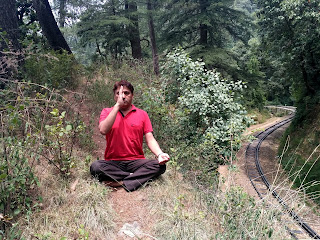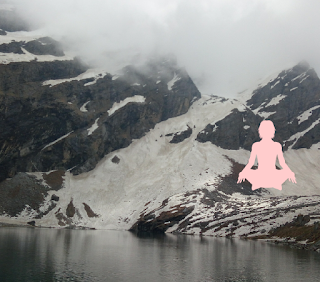Breathe in the breath of life and breathe out the peace with Nadi Sudhi Pranayama
Freedom and discipline appear to
be opposite, yet both are complimentary; self- restraint protects freedom and
go in hand in hand. Practice of self-restraint, truthfulness, compassion and
mental equipoise constitutes the process of yoga which bestows a meaningful
life and will help you to control the emotion and passions, will help to remove
the unhealthy bonds from the mind and heart. Exercise of the body is only aimed
to protect the body from the diseases and it can be possible if one attains the
right way of breathing. Good health is
completely depend on the right breathing mode; and it is universally known that
deprivation of breath cannot sustain life even for minutes. Nadi sudhhi (cleansing)
is a primary task in the early stage of yoga and pranayama brings about quick
purification of all the astral Nadis within the body. So, through exercising
you can gain control over the breath and can easily control the subtle prana
inside. Breathe in the breath of life and breathe out peace; heightened
awareness brings one close to reality which is the prime aim of pranayama which
has to be learnt through pranayama technique with complete discipline to tame the
breath.
When the breath wanders so does the
mind and becomes unsteady, when the breath is calm and composed, so is the
mind. It is important to control the breath first, because the breath is connected
with the senses and is the external manifestation of prana. Prana is related to
mind that leads to the will and finally to the supreme soul. The prana is one
yet it performs many functions in the body that occupy certain places within
body and hence has five names: prana, apana, samana, udana and vyana. Pranayama
purifies Nadis of which there are more than 72000 known as astral Nadis which cannot
to be seen by naked eyes. So by
controlling the act of breathing you can efficiently purify the Nadis and gain control
over it.
This is a process by which the
prana is controlled by regulation of breath is known as pranayama: rhythmical
breathing, Suryabheda, ujjayi, Sitali, Sitkari, Bhastrika and Nadi shudhi.
Pranayama is the chief constituent of yoga, known as the technique of breath
control; it enhances the strength of pranas, nervous system and organs.
Pranayama prolongs life and provides more oxygen to brain and heart that
enables and begets activeness, lightness, flexibility, stamina and strengthens
in the all majors and minors organs of the body within a few days of practicing
it.
Nadi
shudhi pranayama:
Close the right nostril with
thumb of the right hand and breathe in slowly and filling the stomach with air
as it comes from of your left nostril and be ensure stomach will be expand
outside as filling the air in it.
Close the right nostril with
right thumb and breathe in and out from left nostril for 10 breathes ensure the
stomach expands during inhalation and contracts during exhalation.
Now close the left nostril with
ring finger and small finger as well and hold the breath comfortably.
Exhale slowly from the right
nostril by keeping your left nostril closed with small and ring finger. Now
breathe in and out from the right nostril for 10 breathes. Then close the right
nostril and hold the breath comfortably and then exhale slowly from the left
nostril.
Repeat all the above steps three
times and ensure that the last breath you take is exhaling from your left
nostril.
Relax for some time.
Benefits:
Quite safe as compare to other
types of the pranayama as it cures all types of problems such like as
constipation, falling hairs, eyes problem, concentration, laziness, back pain,
stomach problems and nervous system. This pranayama remove all diseases as it purifies
the Nadis, improve digestion and blood-circulation and provides enthusiasm.



Very nice Pranayma for better health
ReplyDeletenice blog!! I am reading your blog . i am also write a blog on yoga and fitness. To read my blog click: https://tinyurl.com/yyg59anh
ReplyDeleteVery nice 👍
ReplyDelete